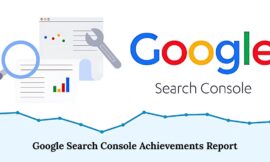“The End of Third-Party Cookies and First-Party Data Strategy”, Marketing industry is entering a turning point with the end of third-party cookies. Over the years, these small tracking files supported advertising models and enabled cross-site personalization, but rising privacy concerns and regulatory pressures are bringing this practice to an end. Browsers are phasing out cookie tracking, forcing brands & advertisers to rethink how they collect, manage and activate customer information. Instead of depending on third-party networks, organizations now look toward direct engagement and reliable data gathered from their own platforms.
Moving toward a first-party data strategy is not just a technical step and it changes how brands plan campaigns, connect with customers and make decisions. Companies that take this path will gain more trust, follow privacy rules more easily and keep offering experiences that feel personal while protecting user information.
What are Third-Party Cookies?
Third-party cookies are tracking files placed on a user’s browser by external domains. For years they supported advertising models by enabling large-scale monitoring of online behavior and this practice allowed businesses to create detailed audience profiles and deliver more targeted campaigns, but it also raised privacy concerns that led to global debates and eventual restrictions. Chrome, Safari & Firefox are all moving away from supporting such cookies, signaling the closure of an era.
Main uses of third-party cookies included:
- Tracking user behavior across multiple websites
- Supporting retargeting campaigns
- Building audience segments for advertisers
- Enabling cross-site personalization
Read Also – HubSpot AI Agent: Introducing AI-powered human–agent marketing tools
Why Third-Party Cookies are Disappearing
The decision to eliminate third-party cookies stems from several factors:
- Privacy Regulations – GDPR in Europe & CCPA in California pushed companies to rethink how they collect and use personal data.
- User Trust – Consumers demand transparency in how their information is tracked.
- Security Concerns – Cross-site tracking raised questions about misuse of data.
- Industry Shift – Platforms like Apple and Google are introducing privacy-first initiatives.
The Rise of First-Party Data Strategy
With the decline of third-party tracking, organizations are focusing on first-party data strategy. This type of data is more reliable because it comes from direct engagement with customers. Businesses can analyze it to personalize experiences, measure campaign effectiveness & build stronger long-term relationships, first-party data is information collected directly from customers via owned channels such as:
- Website analytics
- Mobile applications
- CRM systems
- Email interactions
- Loyalty programs
Benefits of First-Party Data
A well-structured first-party data strategy provides advantages across marketing & operations:
- Accuracy – Data is collected directly, ensuring higher quality.
- Trust – Customers share data knowingly, building stronger relationships.
- Personalization – Enables targeted campaigns without external trackers.
- Compliance – Easier to align with global privacy regulations.
- Integration – Direct data can be linked across CRM, marketing automation & analytics platforms.
Read Also – 10 Generative Engine Optimization (GEO) Strategies For Boosting AI Visibility
Strategies to Adapt to the End of Third-Party Cookies
Businesses need structured approaches to prepare for this change. Some effective strategies include:
1. Strengthening Consent Management
Companies must implement clear consent banners & preference centers, allowing users to control what data is collected.
2. Investing in Customer Data Platforms (CDPs)
CDPs unify first-party data from multiple touchpoints, giving brands a single source of truth about customer behavior.
3. Expanding Loyalty & Membership Programs
Encouraging users to register, sign in & participate in reward systems creates more direct opportunities to gather data.
4. Contextual Advertising
Instead of following users across sites, contextual targeting focuses on the content of a page to deliver relevant ads.
5. Partnerships & Data Collaborations
Some companies are exploring data clean rooms where partners share anonymized information without exposing personal details.
Read Also – Google Releases August 2025 Spam Update
Industry Impact of Third-Party Cookie Phase-Out
The phase-out changes how different industries operate:
- E-commerce – Brands rely more on loyalty programs & personalized recommendations.
- Media & Publishing – Publishers are building stronger subscription models to gather direct data.
- Advertising Agencies – Agencies must rethink targeting models & adopt contextual strategies.
- Technology Providers – Platforms are developing privacy-friendly measurement tools.
Challenges with First-Party Data Strategy
Although promising, first-party data strategies face challenges:
- Scale Limitations – Small businesses may struggle to collect enough data for meaningful insights.
- Integration Costs – Building infrastructure like CDPs requires investment.
- Customer Willingness – Some users may hesitate to share personal information.
- Skill Gaps – Teams need training to analyze & activate first-party data effectively.
Future Outlook
The end of third-party cookies does not mean the end of personalization in marketing, instead, it signals a shift to more transparent, trust-based practices. Companies adopting a strong first-party data strategy will be better positioned to adapt. We can expect:
- Broader adoption of CDPs across industries
- Stronger collaboration between publishers & advertisers
- More innovation in contextual advertising models
- Greater focus on transparency in user data collection
Conclusion
The end of third-party cookies marks a turning point in digital marketing. Moving forward, organizations must focus on building a solid first-party data strategy that aligns with privacy standards, strengthens customer relationships & ensures sustainable growth. Businesses that adapt early will gain a competitive advantage in a privacy-first marketplace.
Publisher: Akshay Tiwari
FAQs
What are third-party cookies and why are they ending?
Third-party cookies track users across different websites for ads. They are ending because of privacy laws, user concerns, and companies moving toward safer, transparent data practices.
What is a first-party data strategy?
A first-party data strategy means collecting data directly from your customers through websites, apps, emails, or loyalty programs. It helps build trust, personalize experiences, and stay privacy-compliant.
How can businesses prepare for the end of third-party cookies?
Businesses can focus on collecting first-party data, use consent banners, run loyalty programs, explore contextual advertising, and invest in customer data platforms for better insights.
How will this change impact industries like e-commerce or media?
E-commerce will depend more on loyalty programs and personalization. Media companies will push subscriptions and direct engagement. Advertisers and agencies must shift toward contextual and privacy-friendly targeting.
What challenges come with adopting a first-party data strategy?
The main challenges are limited data scale, higher technology costs, customer hesitation to share information, and the need for skilled teams to analyze and use data effectively.





